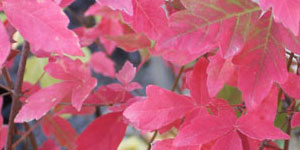grosso romanesco artichoke seeds
Cynara cardunculus scolymus
Our Grosso Romanesco Artichoke seed is hardy.
Chokes have always had a special place
in my heart. I was raised by a Sicilian mother and grandmother
and the image of my Nana’s stuffed artichokes on the Sunday
table is still very clear in my mind. And, of course, I am a
Californian - somehow we seem more inclined than others to seek
out this unique vegetable - maybe its our climate, maybe its our
West Coast, on-the-edge-of-the-planet attitude. Anyway, if you
haven’t tried this incredible food, then experiment. And, if you
haven’t grown it, oh, well, don’t pass up the chance. Talk about
a Jurassic opportunity - the only thing that has impressed me
more than a healthy stand of artichoke might be a planting of
the tropical-looking gunnera with its four to six foot wide
leaves.
The most common artichoke in the market place is the large,
green Globe. But other cultivars are available and those are the
ones we tend to grow. We like the somewhat stronger taste and
the color and variation we can get. The Violetto is small,
shapely and purple tinged and cooks up very tender. The Grosso
Romanesco is very large and also tinged purple - stuff bread
crumbs and romano cheese between the leaves of this one and then
cook it up.
We plant our seed up here in Northern California at the end of
February or the beginning of March. We keep them warm and moist
under cover in our hothouse and we usually pot them up once
before putting them out after all chance of frost is gone. They
are a genetically variable plant and will sprout sports that are
different from the mother plant. They are commonly grown along
the California coast where the temperature remains constantly
moderate and the moist atmosphere keeps the plants cool. Keep
them out of the searing sun if you plant in hotter locations -
dappled light would work well. Around here, they are the most
lush in the spring and in the fall when the summer heat is not a
factor. They want well turned, very fertile and moist soil. Take
the time to mulch carefully - at least 3-6 inches deep to keep
their feet cool.
Harvest is usually in the Spring after planting, sometimes that
fall. Then the plant is good for about 3-5 years. Cut the buds
before they burst into flower.
Gophers love artichokes. Check out our article on gopher control.

